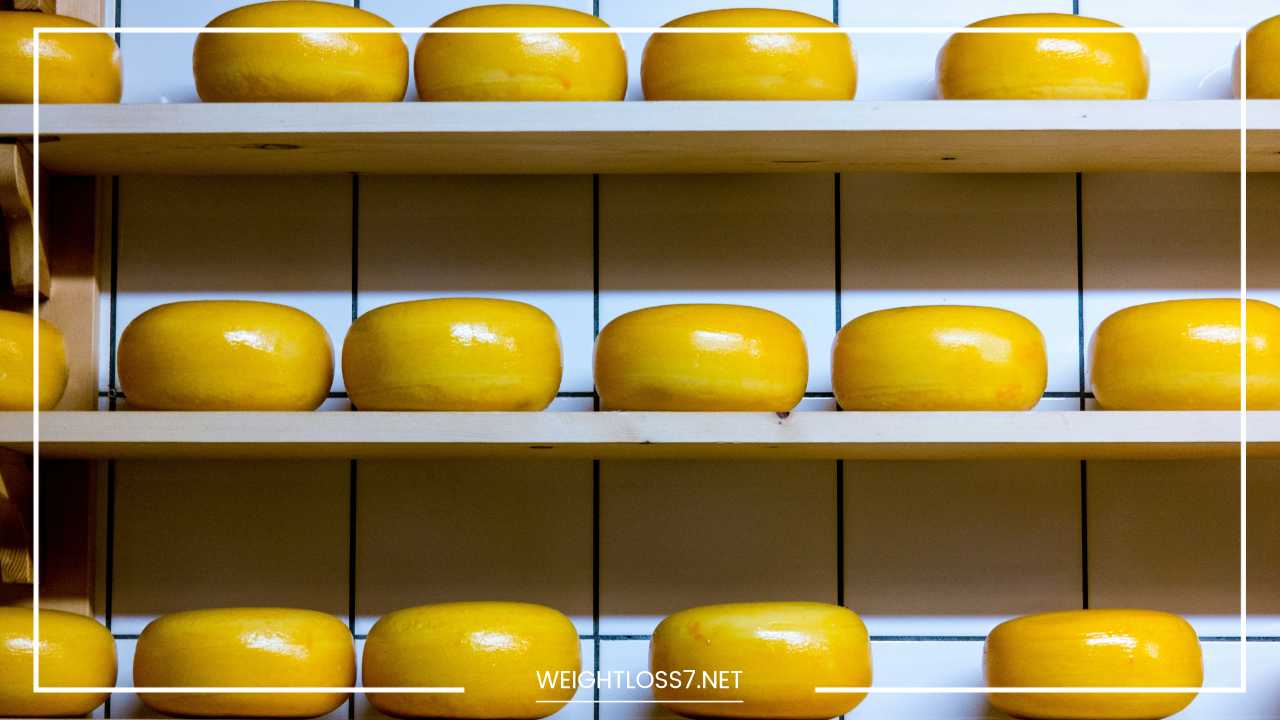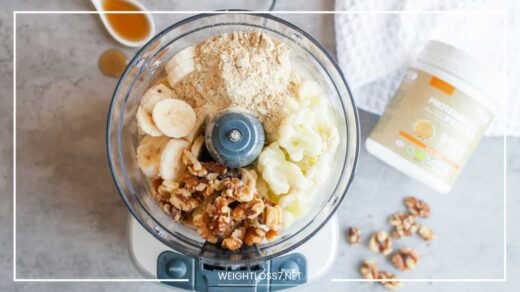The Healthiest Cheese & Beyond: A Delicious Guide to Cheesy Goodness

Healthiest Cheese
The Case for Cheese: Unveiling the Healthiest Choices and Crafting a Deliciously Nutritious Journey
Cheese. A symphony of textures and flavors that dances on the tongue and elevates countless dishes. But can it truly be considered healthy?
Absolutely! Cheese offers a treasure trove of nutrients, from protein and calcium to bone-building phosphorus and gut-friendly probiotics.
However, with hundreds of varieties boasting unique characteristics, navigating the world of cheese and choosing the “healthiest” option can be a daunting task.
Fear not, cheese connoisseurs! This comprehensive guide dives deep into the world of cheese, unveiling the contenders for the title of “healthiest cheese” and exploring factors to consider when making informed selections.
We’ll also explore cheese pairings, delve into the world of artisanal cheesemakers, and equip you with the knowledge to craft a deliciously nutritious cheese journey.
Contenders for the Cheesy Crown: A League of Nutritional Champions
Several cheese varieties rise to the top when it comes to health benefits. Let’s explore some of the superstars and the reasons they deserve a place on your cheese board:
-
Mozzarella: The King of Moderation: This soft, milky cheese is a champion of moderation. Lower in fat and calories than many cheeses, mozzarella offers a good dose of protein (around 6 grams per ounce) and calcium (around 180mg per ounce), all without breaking the calorie bank. Plus, it may contain probiotics like Lactobacillus casei, potentially boosting your immune system. Enjoy it fresh in a Caprese salad with vine-ripened tomatoes and fragrant basil drizzled with balsamic vinegar, or melted on a whole-wheat pizza for a satisfying and nutritious meal.
-
Cottage Cheese: The Protein Powerhouse: Don’t let the name fool you, cottage cheese is a powerhouse of protein! With a crumbly texture and a mild flavor, it’s a versatile ingredient that can be enjoyed in countless ways. Whip up a protein-packed breakfast parfait with fresh berries and a drizzle of honey, create a creamy and flavorful dip with chopped vegetables and herbs, or indulge in a post-workout snack with a sprinkle of your favorite spices. Choose low-fat varieties to keep the fat content in check while reaping the protein benefits.
-
Ricotta: The Light and Creamy Delight: This light and whey-based cheese boasts a creamy texture and subtle sweetness. Compared to other cheeses, ricotta is significantly lower in fat and calories, making it a great choice for pasta fillings, dolloping on fruit for a delightful dessert, or using as a healthier substitute for cream cheese in dips and spreads.
-
Goat Cheese: A Tangy Treat for Sensitive Tummies: Made from goat’s milk, this cheese offers a tangy flavor and a creamy texture. It’s a good source of protein and may be easier to digest for those with lactose intolerance compared to cow’s milk cheese, due to the smaller lactose molecules in goat’s milk. Enjoy it crumbled on salads for a burst of flavor and texture, spread on whole-grain crackers for a satisfying snack, or baked into a delicious cheesecake (the healthy kind, of course!).
-
Feta Cheese: The Salty Sensation: Crumbly and salty, feta cheese is a staple in Greek and Mediterranean cuisine. Lower in fat than some other cheeses, it adds a briny punch to salads, pizzas, and dips. Just be mindful of portion sizes, as feta can be high in sodium.
-
Swiss Cheese: The Champion for Sodium Watchers: Known for its distinctive holes and nutty flavor, Swiss cheese is a champion for those watching their sodium intake. With a surprisingly low sodium content for cheese (around 53mg per ounce), it adds a unique touch to sandwiches, salads, or melted goodness on a lean burger [3].
Beyond the Cheese Itself: A Multifaceted Approach to Healthy Cheese Choices
While the cheese varieties listed above are generally considered “healthier” options, remember that moderation is key. Here are some additional factors to consider when making your cheese selections:
-
Fat Content: Full-fat cheese offers the most flavor, but it also packs more calories and fat. Opt for low-fat or fat-free varieties if you’re watching your calorie intake. However, keep in mind that some fat is necessary for proper nutrient absorption, so find a balance that works for you.
-
Sodium: Cheese can be high in sodium. If you have concerns about sodium intake, choose cheese varieties naturally lower in sodium, like Swiss or mozzarella. You can also rinse certain cheeses, like feta, to help reduce some of the sodium content.
-
Serving Size: It’s easy to get carried away with cheese’s deliciousness. Be mindful of portion sizes to keep your cheese habit in check. A 1-ounce serving is a good rule of thumb, roughly the size of a domino or a golf ball.
- Quality Matters: Unveiling the Goodness of Artisanal Cheese
Opt for cheese made with high-quality ingredients, preferably from grass-fed cows or goats if possible. Grass-fed animals produce milk that is naturally higher in omega-3 fatty acids and conjugated linoleic acid (CLA), both of which offer potential health benefits.
Look for cheeses made with minimal processing and free from artificial additives, preservatives, and added sugars. Artisanal cheesemakers often take pride in using traditional methods and high-quality ingredients, resulting in cheese with not only superior flavor but also potentially higher nutritional value.
- Exploring Cheese Pairings: A Symphony of Flavors
Cheese is a social food, meant to be shared and savored alongside other delicious accompaniments. Discovering how different cheeses complement other foods elevates the cheese experience and unlocks a world of flavor combinations. Here are some ideas to get you started:
-
Classic Pairings: Wine and cheese are a timeless combination. Explore how different wines can enhance the flavors of cheese. For example, a bold Cabernet Sauvignon complements a sharp cheddar, while a light and fruity Sauvignon Blanc pairs beautifully with a creamy goat cheese.
-
Fruity Delights: Cheese and fruit are a match made in heaven. The sweetness and acidity of fruits can cut through the richness of cheese, creating a delightful flavor contrast. Experiment with different combinations like pears and blue cheese, grapes and brie, or dried apricots and aged gouda.
-
The Art of Bread: Crusty bread provides the perfect canvas for cheese. Choose whole-grain bread varieties for added fiber and nutrients. Experiment with different breads like sourdough with a strong cheddar or a baguette with a soft and creamy brie.
-
Charcuterie Charisma: Cured meats like prosciutto and salami add a savory element to a cheese board. Choose lean meats and pair them with complementary cheeses. For example, prosciutto pairs well with a sweet fig jam and a creamy goat cheese, while salami complements a robust aged cheddar.
Cheese and Your Dietary Needs: Finding Your Perfect Match
If you have specific dietary needs, here are some cheese considerations to help you find your perfect cheesy match:
-
Lactose Intolerance: As mentioned earlier, goat cheese, sheep’s milk cheese, and some aged cheeses may be easier to digest for those with lactose intolerance due to the lower lactose content or the breakdown of lactose during the aging process.
-
Vegan Diets: There are many delicious vegan cheese alternatives available, made from nuts (like cashews and almonds), soy, or other plant-based ingredients. These alternatives offer a creamy and flavorful cheese experience without any animal products.
-
Calorie Consciousness: If you’re watching your calorie intake, opt for low-fat or fat-free cheese varieties and be mindful of portion sizes. Cottage cheese, ricotta, and low-fat mozzarella are all great options.
The Bottom Line: A Balanced Approach to Enjoying Cheese
Cheese can be a delightful and nutritious part of a balanced diet. By choosing varieties lower in fat and sodium, practicing portion control, and incorporating other healthy foods alongside cheese, you can savor the creamy goodness without compromising your health goals.
So, explore the wonderful world of cheese, experiment with different flavors and pairings, and find your healthy cheese happy place!
Beyond the Basics: A Journey of Discovery
This guide has just scratched the surface of the fascinating world of cheese. If you’re looking to delve deeper, here are some additional tips to continue your cheesy odyssey:
-
Visit Local Cheesemakers: Support local cheesemakers by visiting your local farmers market or specialty cheese shop. Talk to the cheesemongers, learn about the cheesemaking process, and discover unique and artisanal cheeses made with care and passion.
-
Explore Cheese Tastings: Many cheese shops and restaurants offer cheese tasting experiences. This is a fantastic way to sample a variety of cheeses, learn about different cheese styles and origins, and discover new flavor profiles.
-
Unleash Your Inner Cheesemaker: If you’re feeling adventurous, try making your own cheese at home! There are many beginner-friendly cheesemaking kits available, allowing you to experiment with different flavors and textures.
-
Travel the World Through Cheese: Cheese is a cultural staple around the world. As you travel, explore the local cheeses of different regions. From the creamy Gruyere of Switzerland to the pungent Roquefort of France, each cheese tells a story about its origin and the cheesemaking traditions of its land.
So, embark on your cheese adventure, armed with the knowledge and appreciation for this delicious and versatile food. With a little planning and exploration, you can create a world of delicious and nutritious cheese experiences!
The Versatile Power of Cheese: Expanding Your Culinary Horizons
Cheese’s culinary potential extends far beyond simply snacking or enjoying it on a cheese board. Let’s explore some creative ways to incorporate cheese into your meals, adding depth of flavor and a delightful cheesy touch:
-
Sauces and Soups: Cheese adds richness and creaminess to sauces and soups. Experiment with grated parmesan in a creamy tomato sauce for pasta, or use crumbled ricotta to create a light and fluffy summer soup.
-
Salads: Cheese isn’t just for cheese salads! Crumbled blue cheese adds a sharp and tangy element to a pear and walnut salad, while shredded mozzarella provides a satisfying element to a classic Caprese salad.
-
Eggs: Cheese and eggs are a classic combination. Try adding grated cheddar to scrambled eggs for a protein-packed breakfast, or create a decadent eggs Benedict with a creamy hollandaise sauce featuring a hint of parmesan cheese.
-
Vegetables: Roasted vegetables take on a whole new dimension with the addition of cheese. Toss broccoli florets with olive oil and grated parmesan before roasting for a cheesy and flavorful side dish. Goat cheese can be stuffed into cherry tomatoes for a delightful appetizer or light lunch option.
-
Fillings and Toppings: From savory to sweet, cheese can be a versatile filling or topping for various dishes. Use ricotta cheese for savory ravioli or manicotti, or create a sweet and creamy cheesecake filling. Shredded cheddar cheese adds a golden brown crust to casseroles and gratins, while crumbled goat cheese can be a delicious topping for pizzas and flatbreads.
-
Snacks and Appetizers: Cheese is a natural choice for satisfying snacks and appetizers. Create a cheese platter with various cheese styles, fruits, nuts, and crackers for a delightful spread. Make cheese puffs using puff pastry and grated cheese for a light and airy treat.
Unlocking the Secrets of Cheese Storage: Keeping Your Cheese Fresh
To fully appreciate cheese and enjoy its flavor profile, proper storage is essential. Here are some tips to keep your cheese fresh and delicious:
-
Cheese Wrapping: Wrap cheese tightly in cheese paper or plastic wrap to prevent it from drying out or absorbing odors from other foods in the refrigerator.
-
Temperature Matters: Most cheeses should be stored in the refrigerator, ideally in the cheese drawer (typically the crisper drawer with slightly higher humidity). However, some soft cheeses like brie or camembert are best stored at room temperature for a few hours before serving to allow the flavors to fully develop.
-
Humidity Control: Certain cheeses, especially blue cheeses and some aged varieties, benefit from slightly higher humidity to prevent them from drying out. Consider storing these cheeses in a dedicated cheese cave or using a cheese storage container with a humidity control feature.
The Art of Cheesemaking: A Glimpse Behind the Rind
Cheesemaking is an ancient art form with a rich history and diverse traditions. Understanding the basic cheesemaking process can deepen your appreciation for cheese:
-
Milk Matters: The type of milk used (cow, goat, sheep, or even buffalo) plays a significant role in the final cheese flavor and texture.
-
The Curdling Process: Milk is curdled using rennet, an enzyme that separates the milk solids (curds) from the liquid whey.
-
The Art of Salting: Salt is added to the curds to enhance flavor, control moisture content, and inhibit unwanted bacteria growth.
-
The Pressing Process: The curds are pressed to remove excess whey and compact the cheese.
-
Aging and Development: Different cheese varieties undergo varying aging periods, which significantly impact their flavor and texture.
A Conclusion Steeped in Cheese Appreciation
Cheese is a versatile and delicious food with a rich history and a complex flavor profile. By understanding the different cheese varieties, their health considerations, and creative culinary applications, you can embark on a delicious and rewarding cheese journey.
So, explore the world of cheese, experiment with flavors and pairings, and discover the joy of incorporating this delightful food into your diet in a balanced and healthy way.
Remember, cheese appreciation is a lifelong adventure, filled with endless possibilities to savor and celebrate the magic of cheese!

















